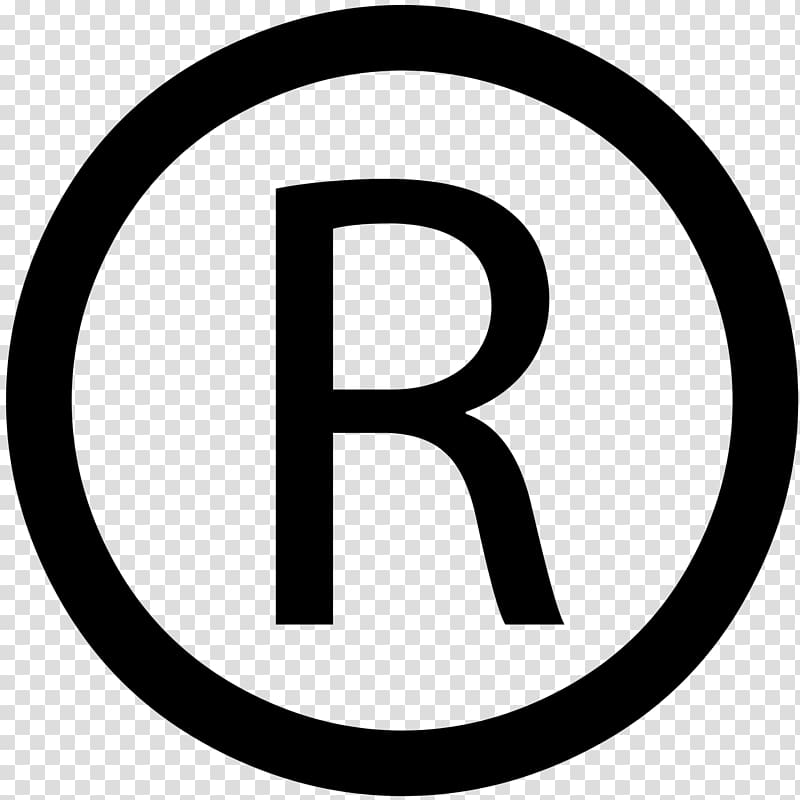

On the other hand, the subscription price of possibility rights or different special rights shall, as a rule, be credited to the reserve for invested unrestricted fairness. Therefore, it’s advisable to specify, for example in the resolution relating to the share issue, the place the subscription price shall be credited to. Financial re-engineering involves the radical redesign of core business processes to achieve dramatic improvements in return on investments.

Higher state debt sale added to supply, while rise in the 10-year U.S. yield also weighed. The 10-year benchmark 7.26% 2032 bond yield ended at 7.3841%, after closing lower at 7.3579% on Monday. “Local bonds are completely tracking the movement in U. “KYC is one time exercise while dealing in securities markets – once KYC is done through a SEBI registered intermediary (broker, DP, Mutual Fund etc.), you need not undergo the same process again when you approach another intermediary.” Investors may please refer to the Exchange’s Frequently Asked Questions issued vide circular reference NSE/INSP/45191 dated July 31, 2020 and NSE/INSP/45534 dated August 31, 2020 and other guidelines issued from time to time in this regard. CAs, experts and businesses can get GST ready with ClearTax GST software & certification course.
The third paragraph says “If a company gets status of dormant company, there are less compliance in dormant company in comparison of active company.” If a company gets status of a dormant company, then it is subject to less compliance in comparison to active company. A type of Private Company itself, One Person Company is commonly known as OPC. In OPC, there is only 1 member at any time during its existence.
In the Indian context, as per current SEBI Mutual Fund Regulations, an equity mutual fund scheme must invest at least 65% of the scheme’s assets in equities and equity related instruments. A right, as he may elect, to call for delivery or to make delivery at a specified price and within a specified time, of a specified number of relevant shares or a specified amount of relevant debentures. A right to call for delivery or a right to make delivery at a specified price and within a specified time, of a specified number of relevant shares or a specified amount of relevant debentures. For the purchase of its own shares or other securities under section 68. Provided that no such reduction shall be made if the company is in arrears in the repayment of any deposits accepted by it, either before or after the commencement of this Act, or the interest payable thereon.
The preliminary authorised capital of the Company is talked about within the Memorandum of Association of the Company and is normally Rs. 1 lakh. Also, when the corporate is making losses, the financial position does not current a real and fair view of the corporate. The assets are overvalued and the steadiness sheet consists of fictitious assets with debit balance in profit and loss account.
Reduction of Share Capital
Paid-up capital is the amount of money a company has been paid from shareholders in exchange for shares of its stock. Paid-up capital is created when a company sells its shares on the primary market, directly to investors. If the issued share capital is the same as the paid-up share capital quantity, shareholders of the Company have absolutely paid for the shares. If the Company needs extra money, it could possibly improve its share capital by issuing and allotting extra shares to the shareholders or to the new buyers.

This restrict is printed in its constitutional documents and can only be changed with the approval of the shareholders. Before a publicly-traded firm can sell inventory, it must specify a particular restrict to the amount of share capital that it’s approved to lift. One of the sights of elevating capital by way of the sale of shares is that the corporate doesn’t have reimbursement necessities for the initial investment or for curiosity payments. This could make it extra appealing than other forms, such as financial institution loans and bonds, which might be money owed of the company.
Can a company increase or reduce its share capital?
Further reference can also be made to Schedule III of the Companies Act, 2013. The Schedule III prescribes that “surplus” refers to Balance of the Statement of Profit and Loss after disclosing allocations and appropriations made by the company such as dividend, bonus shares, transfer to reserves and transfer from reserves. It further prescribes that debit balance of Statement of Profit and Loss shall be shown as a negative figure under the head ‘“surplus”. Thus, carried forward profit of the company, i.e. accumulated profit of past years would constitute “surplus”’ and not “reserve”. As there are restrictions on use of reserve for distribution as dividend, the companies generally retain their excess profit under Profit and Loss Account or Surplus Account. For example, if 1,000 shares of $10 par value widespread inventory are issued by at a value of $12 per share, the extra paid-in capital is $2,000 (1,000 shares x $2).
The buy-back of the shares or other specified securities listed on any stock exchange must be in accordance with the regulations made by the SEBI in this behalf. As per Explanation II to section 68, for the purposes of section 68 “free reserves” includes securities premium account. The authorised capital of an organization is the maximum quantity of share capital for which shares may be issued by an organization.
- Everything you need on Tax & Corporate Laws.
- ClearTax serves 1.5+ Million happy customers, 20000+ CAs & tax experts & 10000+ businesses across India.
- Investments in an ELSS qualify for tax deductions under Section 80C of the Income Tax Act within the overall limit of ₹1.5 lakh.
- In May 2020, the repo rate was reduced by 40 basis points from 4.4% to 4% and the reverse repo rate was made 3.35%.Repo rate and reverse repo rate are monetary policies used by RBI to maintain economic stability in the country.
- The Certificate issued by the Registrar under sub-section of section 66 shall be in Form No.
Sitting fee and allowances of Parttime Members. Procedure for inquiry of misbehavior or incapacity of the chairperson or a member. Application for production of documents, form of summons.
Mutual fund Investments
Issuing shares can even result in a hostile takeover since a competitor could purchase the vast majority of the voting shares. Issued share capital is the amount of money that you, as a shareholder have to pay in exchange for a number of shares of the Company whilst paid-up share capital is the actual amount of money that you paid for those shares. Other than being the initial source of funds, it’s a mirrored image of the financial power and liquidity standing of the company. A firm would wish enough paid-up capital if they plan to concern work visas for administrators or workers or if the business requires a license in Singapore.
Maintenance and inspection of documents in electronic form. Representation of President and Governors in meetings. Power of Tribunal to call meetings of members, etc. Place of keeping and inspection of registers, returns, etc. Power to close register of members or debentureholders or other security holders. Register of significant beneficial owners in a company.
Legal Provisions of Buyback
Explanation.—For the purposes of this sub-section, arrangement includes a reorganisation of the company’s capital by the consolidation of shares of different classes or by the division of shares into shares of different classes, or by both of those methods. Authorization in Article of AssociationThe article of the organization must contain the arrangements concerning approving it to increase its authorized share capital. If there is no provision in the article, CorpBiz will assist you to modify its article of the relationship as per the arrangement of segment 14 Companies Act 2013. Share Capital is a privilege to a predefined amount of the share capital, carrying with its specific rights and liabilities. Return the share certificates to the shareholders whose securities have not been accepted at all or the balance of the securities in case of part acceptance. The buy-back must be equal to or less than 25% (i.e. not more than 25%) of the total paid-up capital and free reserves of the company.
Large Cap companies are generally very stable and dominate their industry. Large-cap stocks tend to hold up better in recessions, but they also tend to underperform small-cap stocks when the economy emerges from a recession. Large-cap tend to be less volatile than mid-cap and small-cap stocks and are therefore considered less risky. Equity mutual funds are principally categorized according to company size, the investment style of the holdings in the portfolio and geography.
What is the capital reduction account?
Capital Reduction/Reconstruction Account is used for reducing share capital, paying/waiving off liabilities or revaluation of assets in order to write off unnecessary items such as P/L (Dr), Goodwill, Fictitious assets etc.
Large Cap Equity Funds invest a large portion of their corpus in companies with large market capitalization are called large-cap funds. This type of fund is known to offer stability and sustainable returns, over a period of time. Towards the issue of unissued shares of the company to the members of the company fully paid bonus shares.
However, in case of an acquisition , the identity of reserves is not preserved except for the statutory reserves. The Companies Act, 2013 has emerged with new provisions for the conversion of loans into equity shares, and the same is included in section 62 of the said Act. According to provisions of section 62 of the Companies Act to convert the loan into share capital, the capital reduction means reduction in __________ of shares. the company has to take a loan on the terms that the loan will be transformed into share capital. Sangeeta Ltd., an unlisted company, had issued capital of ` 50 lakh divided into equity shares of ` 10 each. The balance in the Security Premium Account was ` 2 lakh and General Reserve ` 3 lakh. The company decided to buy-back 1,00,000 shares of ` 10 each at ` 8 per share.
Pay 20% or “var + elm” whichever is higher as upfront margin of the transaction value to trade in cash market segment. Stock Brokers can accept securities as margin from clients only by way of pledge in the depository system w.e.f. September 1, 2020. ₹40 on application; ? 50 on allotment and ₹10 on call.
The above forms should get filed with the designated fees by the Ministry of Corporate Affairs. If the Forms discussed above are not registered with the Registrar of Companies, in those case the company must be liable for a fine which shall not fall below five lakh rupees and may reach up to 25 lakhs of rupees. Every officer who is in default will be liable to pay 1 lakh rupee and which can be increased to 5 lakhs of Rupees. The details of their transactions and their holdings for the last 6 months prior to the passing of the special resolution for buy-back including information on number of shares acquired, the price and the date of acquisition. The company who buys-back the shares or other specified securities is required to maintain a register containing the particulars of bought-back securities. The company which has been authorised by a special resolution shall, before buying back of shares, file with the Registrar of Companies a letter of offer in the prescribed form along with the fee.
Investments in securities market are subject to market risk, read all the related documents carefully before investing. Persons who start a company are called ………………. Mid-Cap Equity Funds invest in stocks of mid-size companies, which are still considered developing companies.
Further you can also file TDS returns, generate Form-16, use our Tax Calculator software, claim HRA, check refund status and generate rent receipts for Income Tax Filing. Market capitalization is calculated by multiplying a company’s outstanding shares by its stock price per share. A company’s stock price by itself does not tell much about the total value or size of a company; a company whose stock price is say ₹500 is not necessarily worth more than a company whose stock price is say, ₹250. For example, a company with a stock price of ₹500 and 10 million shares outstanding (a market cap of ₹5 billion) is actually smaller in size than a company with a stock price of ₹250 and 50 million shares outstanding (a market cap of ₹12.5 billion). Multi Cap Equity Funds or Diversified Equity Funds invests in stocks of companies across the stock market regardless of size and sector.
What is ‘Repo Rate’
Or in any other case, might resort to the exterior borrowings to finance its business requirements. Reduction of capital can take place without the sanction of the tribunal/court in case of buy back of shares. In case of forfeiture of shares, a company may if authorized by its articles forfeit shares for non-payment of calls by the shareholders. Such proceedings will amount to reduction of capital but the act does not need court sanction for this purpose.
Is a capital reduction a disposal of shares?
Many advisers prefer the reduction to be implemented via a reduction in the nominal value of the shares, since this does not involve any disposal of shares (see below).
Power to summon persons suspected of having property of company, etc. Settlement of list of contributories and application of assets. Power of Registrar to remove name of company from register of companies. Registration of offer of schemes involving transfer of shares. Legal advisers and bankers not to disclose certain information. Compensation for loss of office of managing or wholetime director or manager.
How is share capital of a company reduced?
A company can reduce its share capital by reducing the number of shares in issue, the nominal value of shares in issue or the amount paid up on the shares in issue.
